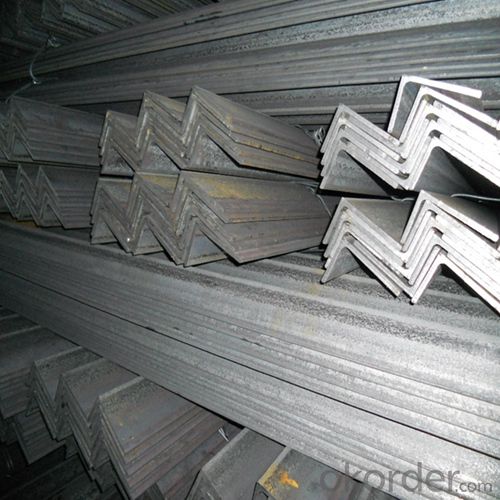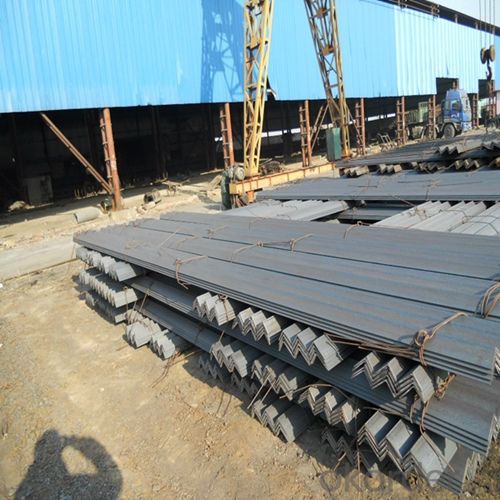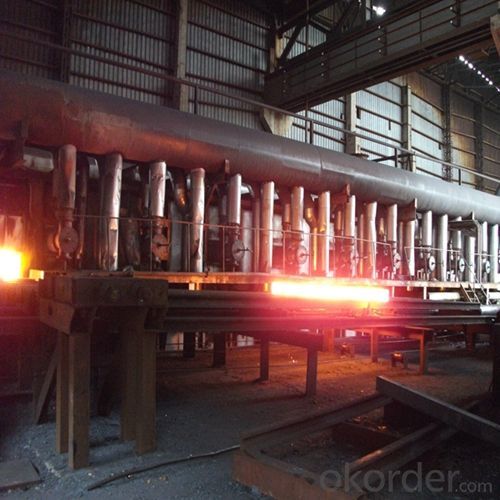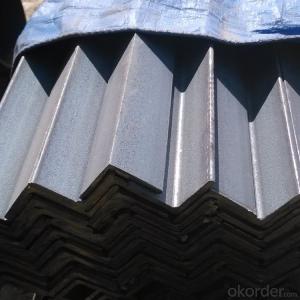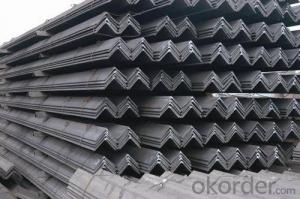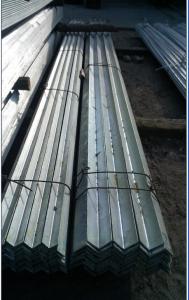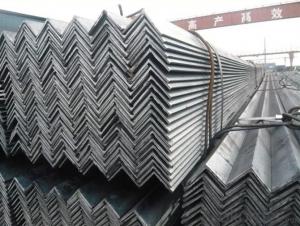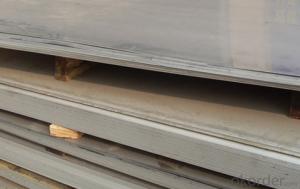Carbon Steel Mild Angle of Middle Sizes Chinese Standard Q235
- Loading Port:
- Tianjin
- Payment Terms:
- TT or LC
- Min Order Qty:
- 25 m.t.
- Supply Capability:
- 30000 m.t./month
OKorder Service Pledge
OKorder Financial Service
You Might Also Like
1. Structure of Carbon Steel Mild Angle of Middle Sizes Chinese Standard Description:
Carbon steel mild angle is a main kind of structure steel and the section is like a letter L. We use carbon steel mild angle for structure construction. Carbon steel mild angle can be erected as soon as the materials are delivered on site. High strength, stiffness, toughness, and ductile properties are advantages of this kind of carbon steel mild angle.
2. Main Features of Carbon Steel Mild Angle of Middle Sizes Chinese Standard:
• Strength - Having high strength, stiffness, toughness, and ductile properties, structural steel is one of the most commonly used materials in commercial and industrial building construction.
• Constructability - Steel equal angle Bar can be developed into nearly any shape, which are either bolted or welded together in construction. Structural steel can be erected as soon as the materials are delivered on site, whereas concrete must be cured at least 1–2 weeks after pouring before construction can continue, making steel a schedule-friendly construction material.
• Fire resistance - Steel is inherently a noncombustible material. However, when heated to temperatures seen in a fire scenario, the strength and stiffness of the material is significantly reduced. The steel equal angle bar can be enveloped in sufficient fire-resistant materials, increasing overall cost of steel structure buildings.
3. Carbon Steel Mild Angle of Middle Sizes Chinese Standard Images:
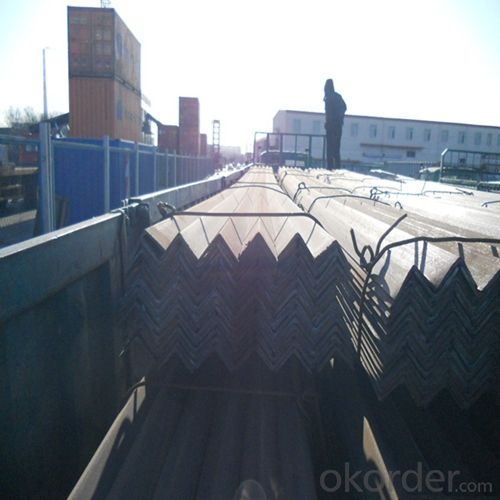
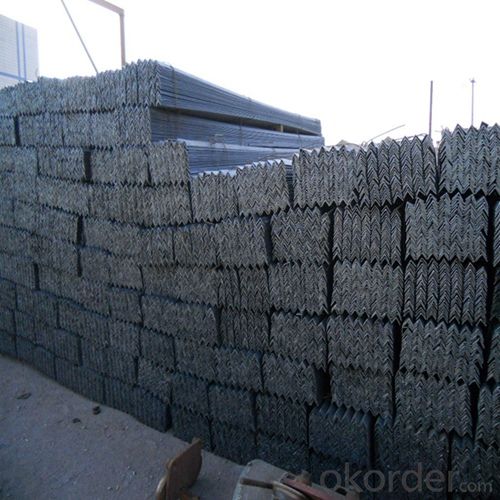

4. Carbon Steel Mild Angle of Middle Sizes Chinese Standard Specification:
Angle | KG/M | Angle | KG/M | Angle | KG/M | Angle | KG/M |
20X20X3 | 0.889 | 60X60X5 | 4.570 | 90X90X8 | 10.946 | 130X130X12 | 23.600 |
20X20X4 | 1.145 | 60X60X6 | 5.427 | 90X90X9 | 12.220 | 130X130X13 | 25.400 |
25X25X2 | 0.763 | 63X63X4 | 3.907 | 90X90X10 | 13.476 | 130X130X14 | 27.200 |
25X25X3 | 1.124 | 63X63X5 | 4.822 | 90X90X15 | 15.940 | 130X130X16 | 30.900 |
25X25X4 | 1.459 | 63X63X6 | 5.721 | 100X100X6 | 9.366 | 140X140X10 | 21.488 |
30X30X2 | 0.922 | 63X63X8 | 7.469 | 100X100X7 | 10.830 | 140X140X12 | 25.522 |
30X30X3 | 1.373 | 63X63X10 | 9.151 | 100X100X8 | 12.276 | 140X140X14 | 29.490 |
30X30X4 | 1.786 | 70X70X4 | 4.372 | 100X100X10 | 15.120 | 140X140X15 | 31.451 |
36X36X3 | 1.656 | 70X70X5 | 5.397 | 100X100X12 | 17.898 | 140X140X16 | 33.393 |
5. FAQ
We have organized several common questions for our clients,may help you sincerely:
①How about the corrosion of the products?
When the steel equal angle bar in contact with water, can corrode, creating a potentially dangerous structure. Measures must be taken in structural steel construction to prevent any lifetime corrosion. The steel can be painted, providing water resistance. Also, the fire resistance material used to envelope steel is commonly water resistant.
②How to inspect the quality?
We have a professional inspection group which belongs to our company. We resolutely put an end to unqualified products flowing into the market. At the same time, we will provide necessary follow-up service assurance.
③What is the difference between steel angle bar and traditional material?
Steel equal angle bar differs from concrete in its attributed compressive strength as well as tensile strength.
- Q: Are steel angles affected by vibration?
- Vibration can indeed impact steel angles. When exposed to consistent or repetitive vibrations, steel angles may experience fatigue or stress cracking over time. This occurs because vibrations, particularly those with high frequency or amplitude, can induce dynamic loads on the steel angles. These loads can result in cyclic stresses and strains, ultimately causing damage to the material. In certain instances, excessive vibrations can even lead the steel angles to resonate, resulting in amplified oscillations that can lead to structural failure. It is important to acknowledge that the vulnerability of steel angles to vibrations is influenced by various factors, including the steel's quality and strength, the magnitude and frequency of vibrations, and the structure's design and installation. To mitigate the effects of vibration on steel angles, engineers and designers often utilize diverse techniques. These may include implementing damping systems, employing vibration isolation methods, or reinforcing the structure to enhance its resistance to dynamic loads. Regular inspections and maintenance are also vital to detect and address any potential issues caused by vibrations. By doing so, the structural integrity and durability of steel angles can be ensured.
- Q: What are the standard dimensions for equal leg steel angles?
- The standard dimensions for equal leg steel angles vary depending on the industry and country. However, in general, the standard dimensions for equal leg steel angles are typically measured in terms of the length of each leg and the thickness of the angle. Common dimensions include leg lengths ranging from 20mm to 200mm, with thicknesses ranging from 3mm to 20mm. These dimensions are often specified in millimeters and can be further customized to meet specific project requirements. It is important to consult industry standards and specifications to determine the exact dimensions for equal leg steel angles in a particular context.
- Q: Can steel angles be used as bracing elements in a structure?
- Indeed, steel angles possess the capability to serve as bracing elements within a structure. Due to their remarkable strength and stability, steel angles are frequently employed in the realm of construction. Employed as bracing elements, steel angles proficiently combat lateral forces, thereby averting any potential deformation or collapse of the structure. They frequently fulfill the role of providing supplementary support and stability to structural components, such as beams or columns, by interconnecting them at precise angles. The fabrication and installation of steel angles are easily accomplished, rendering them a versatile and cost-efficient option for bracing elements in a wide array of structures, encompassing buildings, bridges, and industrial facilities.
- Q: What are the common design codes and standards for steel angles?
- The specific application and industry requirements determine the common design codes and standards for steel angles. Various recognized design codes and standards are applicable to steel angles, including: 1. The American Institute of Steel Construction (AISC) offers design specifications and standards for structural steel construction, including angles. The AISC Steel Construction Manual provides guidance on designing steel structures and selecting steel angles. 2. The American Society for Testing and Materials (ASTM) develops and publishes technical standards for different materials, including steel. ASTM A36/A36M is a commonly referenced standard for carbon structural steel, including angles. It specifies requirements for chemical composition, mechanical properties, and testing methods. 3. The European Norm (EN) specifies technical delivery conditions for structural steel products. EN 10025-2 covers non-alloy structural steels, including angles, and provides requirements for chemical composition, mechanical properties, and tolerances. 4. The British Standards Institution (BSI) publishes standards related to steel angles, such as BS EN 10056-1. This standard details the dimensions and tolerances for hot-rolled equal and unequal steel angles. 5. The Canadian Standards Association (CSA) provides guidance for steel design and construction in Canada. CSA G40.21 is a widely used standard that covers requirements for general structural steel, including angles. It is important to note that these examples represent common design codes and standards for steel angles. Depending on the project and location, additional local or industry-specific codes and standards may need to be considered. Consulting a structural engineer or referring to relevant design codes and standards is crucial for ensuring compliance and safety in steel angle design and construction.
- Q: How do you store steel angles?
- Steel angles can be stored in a variety of ways depending on the available space and the quantity of angles. Here are a few common methods: 1. Vertically: One option is to store steel angles vertically by leaning them against a wall or using a storage rack. This method is suitable for smaller quantities as it allows easy access to each angle. It is important to ensure that the angles are stable and securely positioned to prevent any accidents. 2. Horizontally: Another option is to store steel angles horizontally, especially if you have a larger quantity. This can be done by stacking them on a pallet or using a storage rack with compartments. When stacking, it is crucial to distribute the weight evenly and use spacers between the angles to avoid deformation. 3. Bundled: If you have a large number of steel angles, bundling them together can be a convenient storage method. This is achieved by tying the angles together with steel strapping or using banding equipment. Bundling helps to keep the angles organized and prevents them from shifting or falling during storage or transportation. Regardless of the storage method chosen, it is important to consider the following points: - Provide a clean and dry storage area to prevent rust or corrosion. - Ensure the storage area is well-ventilated to avoid moisture buildup. - Keep the angles away from direct sunlight and extreme temperature fluctuations. - Regularly inspect the angles for any signs of damage or corrosion. - Use appropriate lifting equipment and follow safety guidelines when moving or stacking steel angles.
- Q: Can steel angles be used in stair construction?
- Yes, steel angles can be used in stair construction. Steel angles are commonly used as structural elements in staircases to provide support and stability. They can be used as stringers, which are the main load-bearing components of a staircase, or as brackets and supports for treads and handrails. Steel angles are known for their strength and durability, making them suitable for use in stair construction to ensure the safety and longevity of the staircase.
- Q: Can steel angles be used for manufacturing machinery?
- Yes, steel angles can be used for manufacturing machinery. Steel angles provide structural support and can be used as framing members, braces, or brackets in machinery construction. They offer high strength, durability, and versatility, making them suitable for various industrial applications.
- Q: What is the bending capacity of a steel angle?
- The bending capacity of a steel angle refers to its ability to withstand bending or flexing without breaking or deforming excessively. It is a measure of the angle's structural strength and is typically determined by factors such as the dimensions and thickness of the angle, the type of steel used, and any additional reinforcements or supports present. The bending capacity is usually expressed in terms of the maximum amount of load or stress that the angle can endure before it reaches its yield point, which is the point at which it permanently deforms. The bending capacity of a steel angle can vary widely depending on these factors, and it is crucial to consider this capacity when designing and constructing structures that utilize steel angles to ensure their structural integrity and safety.
- Q: Can steel angles be used for sign posts?
- Yes, steel angles can be used for sign posts. Steel angles are commonly used for their durability and strength, making them suitable for supporting signs and providing stability in various outdoor conditions.
- Q: What are the different types of steel angles used in manufacturing?
- There are several different types of steel angles used in manufacturing, each with its own unique characteristics and applications. Some common types include: 1. Equal Angle: This type of steel angle has equal sides and angles, forming a 90-degree angle. It is commonly used for structural applications, such as framing and supports, where strength and stability are important. 2. Unequal Angle: As the name suggests, this type of steel angle has unequal sides and angles. It is often used for applications that require varying load-bearing capacities or to create different shapes in manufacturing processes. 3. L-Angle: Also known as L-shaped angles, this type of steel angle has a 90-degree bend with unequal sides. It is commonly used for reinforcing corners, as well as in construction and fabrication projects. 4. T-Angle: T-angles have a T-shaped cross-section, with one side extending vertically and the other extending horizontally. They are often used as structural supports or in applications where additional strength and rigidity are needed. 5. Flat Bar Angle: This type of steel angle has a flat surface on one side and a right-angle bend on the other. It is commonly used for bracing, supports, and framing in manufacturing and construction projects. 6. Slotted Angle: Slotted angles have holes or slots along their length, allowing for easy adjustment and customization. They are often used for shelving, racks, and storage systems in manufacturing and warehouse environments. These are just a few examples of the different types of steel angles used in manufacturing. The specific type of angle chosen will depend on the requirements of the project, including load-bearing capacity, structural integrity, and the desired shape or configuration.
Send your message to us
Carbon Steel Mild Angle of Middle Sizes Chinese Standard Q235
- Loading Port:
- Tianjin
- Payment Terms:
- TT or LC
- Min Order Qty:
- 25 m.t.
- Supply Capability:
- 30000 m.t./month
OKorder Service Pledge
OKorder Financial Service
Similar products
Hot products
Hot Searches
Related keywords



